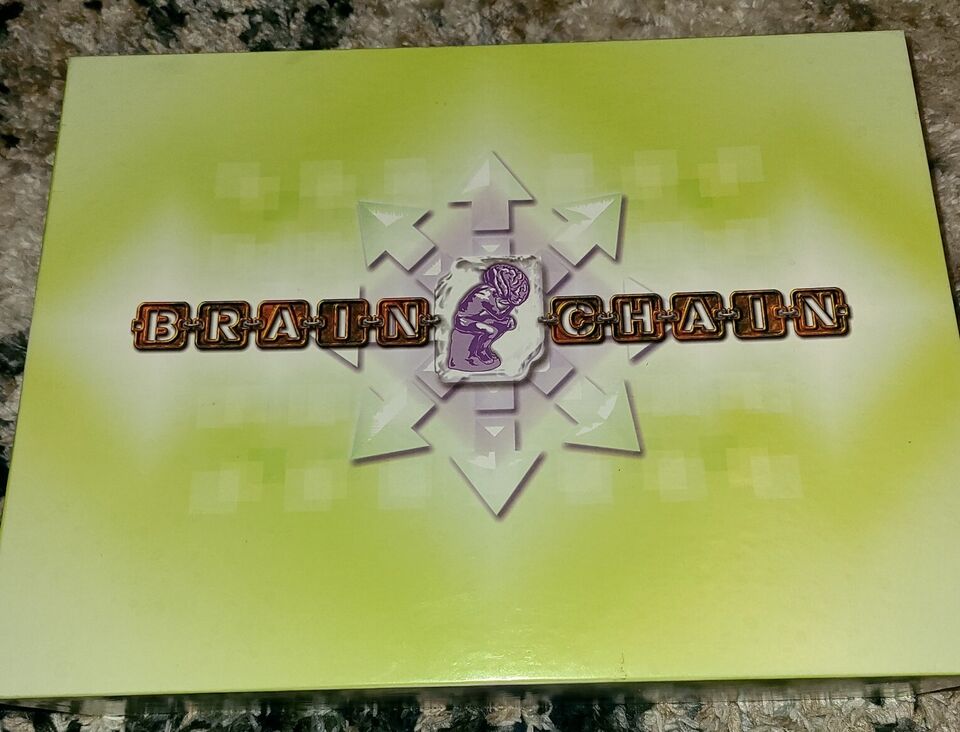Brain Chain (2002)
Brain Chain
Brain Chain is a strategy-driven trivia board game played by two or three players or teams. The object of the game is to be the first player or team to connect an unbroken chain of five links of the same color. The game was first introduced in 1991 by the game company, Pressman Toy Corporation.
Why is Brain Chain Popular?
Brain Chain is a popular game because it combines strategy and trivia, making it a fun and challenging game for players of all ages. The game is significant because it helps players improve their memory, critical thinking, and problem-solving skills.
Game Components of Brain Chain
How To Setup Brain Chain
Setting up Brain Chain is straightforward and takes about 3 minutes. Players agree on the number of links necessary to win the game, which can be four, five, or six links in a row. The gameboard is laid out, and each player or team chooses their colored links. The yellow playing pawn is placed on the board, and the movement cards and Brain Pills are distributed. Players decide who goes first and begin the game by playing a movement card to move the pawn.
Gameplay Mechanics and Game Objective
Player Experience
Brain Chain offers a unique blend of trivia and strategy that appeals to a wide range of players. The game is designed for 2-3 players or teams, making it a great option for family gatherings or small groups of friends. The eight diverse categories ensure that there is something for everyone, and the Oddball category adds a fun and challenging twist.
Pros
Cons
Personal Thoughts on Brain Chain
Brain Chain is ideal for families, trivia enthusiasts, and anyone looking for a game that challenges both knowledge and strategic thinking. Its inclusion in GAMES Magazine’s Top 100 Games highlights its quality and enjoyment factor. This game is perfect for those who appreciate a balance between fun and intellectual challenge, making it a great addition to any board game collection.
We are supported by our audience. When you purchase through links on our site, we may earn an affiliate commission, at no extra cost for you. Learn more.

